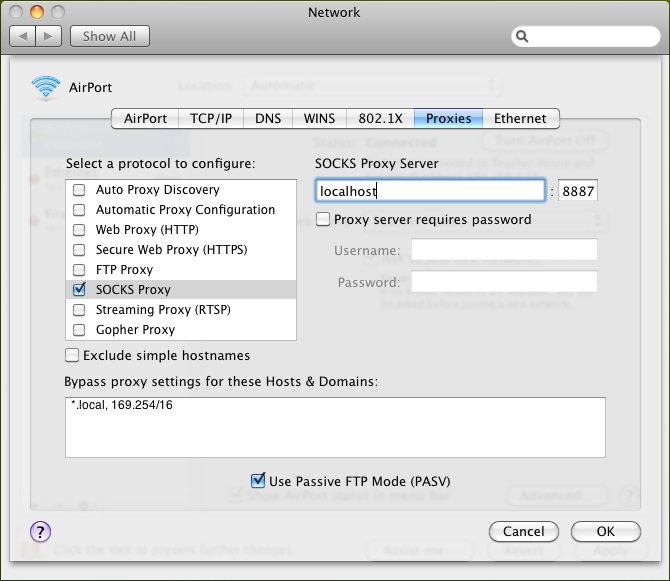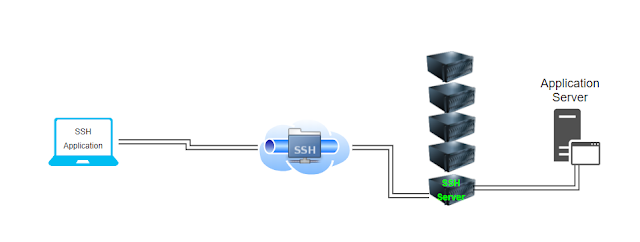

How can I fix this and what do the channel errors mean.
#CHROME SETUP SSH TUNNEL SOFTWARE#
STEP 4 Configure PuTTY for a Web Browser Tunnel STEP 5.1 Configure Internet Explorer to Pass Through an SSH Tunnel STEP 5 Configure Your Software ADVANCED SCENARIO (DYNAMIC PORT. For Firefox, refer to Step 5.2, and for RDP usage, refer to Step 2. #3 direct-tcpip: listening port 9229 for localhost port 9229, connect from 127.0.0.1 port 65535 to UNKNOWN port 0 (t3 nr0 i0/0 o0/0 e/0 fd 106/106/-1 sock 106 cc -1)ĭebug1: channel 3: free: direct-tcpip: listening port 9229 for localhost port 9229, connect from 127.0.0.1 port 65535 to UNKNOWN port 0, nchannels 3ĭebug3: channel 3: status: The following connections are open: Further information for Internet Explorer, Chrome or Edge can be seen in Step 5.1.

These are the verbose errors I am getting: channel 2: open failed: connect failed: Connection refusedĭebug1: channel 2: free: direct-tcpip: listening port 9229 for localhost port 9229, connect from 127.0.0.1 port 65535 to UNKNOWN port 0, nchannels 4ĭebug3: channel 2: status: The following connections are open: In chrome the network targets seem to be configured properly. I tried using -nN in the arguments but this does not even load my command line competely. The SSH connection works but when filling in the tunneling arguments above I keep getting following error message in a loop: channel 2: open failed: connect failed: Connection refusedĬhannel 3: open failed: connect failed: Connection refused These are the arguments I give on the secure shell app: -L 9229:localhost:9229 My nodejs app is hosted on Google Compute Engine. You can now access the private endpoints on Azure VNet from your Chrome browser.I am trying to setup an ssh tunnel to use the chrome nodejs debugger on my local system. >"C:\Program Files (x86)\Google\Chrome\Application\chrome.exe" -user-data-dir="%USERPROFILE%\chrome-via-socks" -proxy-server="socks5://localhost:1080" The default settings for other Chrome instances won't be affected. Step 4: Configure the browser to access endpoints in Azure VNet through a SSH tunnelĬonfigure one instance of your Chrome browser to proxy through the tunnel.
#CHROME SETUP SSH TUNNEL FREE#
If an SSH Tunnel is configured the connection is searched and if found a free local TCP port determined. SSH tunnel is a familiar concept for Linux users. You can use any configured SSH connection to be used as a tunnel server for another connection. In order to access the rest of the endpoints in your Virtual Network (VNet) on Azure, you can set up a SSH tunnel.

When you deploy virtual machines on Azure, a good practice is to set up Azure Network Security Groups (NSG) to minimize the exposure of endpoints and limit access to those endpoints to only known IPs from the Internet.


 0 kommentar(er)
0 kommentar(er)
